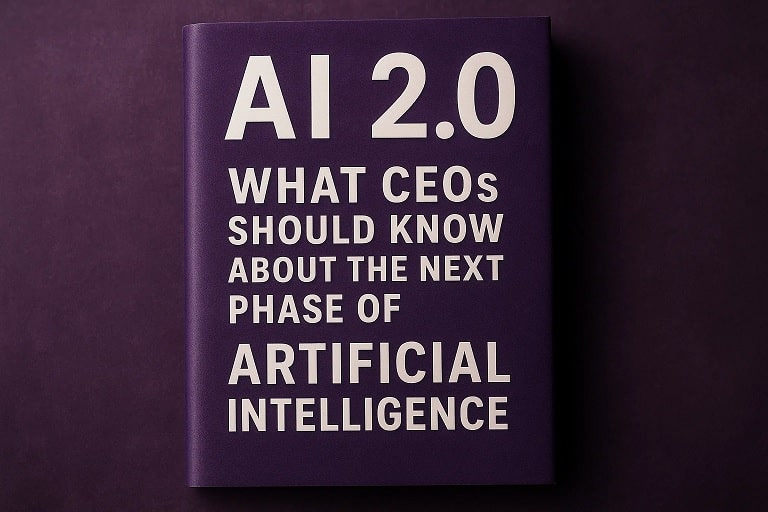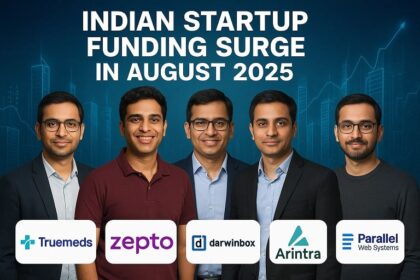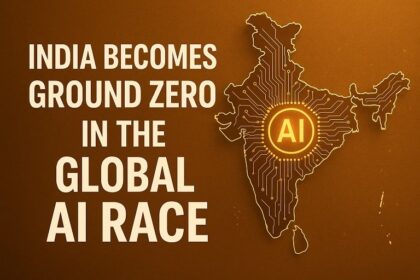AI 2.0: What CEOs Should Know About the Next Phase of Artificial Intelligence
The landscape of artificial intelligence is rapidly evolving, with “AI 2.0” emerging as the term for the next transformative phase beyond current generative AI technologies. This new era focuses on advanced systems like agentic AI, artificial superintelligence, and autonomous agents capable of solving complex problems independently, potentially revolutionizing business operations, decision-making, and productivity. For CEOs, understanding AI 2.0 is crucial to staying competitive, as it promises efficiency gains, new revenue streams, and workforce transformations, but also poses risks like job displacement and ethical challenges. As of September 2025, with tools like AI agents entering the hype cycle’s peak, leaders must prioritize foundational technologies, governance, and strategic investments to harness this phase effectively. This in-depth guide covers the essentials of AI 2.0, including definitions, latest developments, historical evolution, business impacts, future prospects, FAQs, and more, equipping executives with actionable insights for the AI-driven future.
Defining AI 2.0: The Shift from Generative to Agentic and Superintelligent Systems
AI 2.0 represents the next evolutionary stage of artificial intelligence, moving beyond AI 1.0’s focus on generative models (like ChatGPT) to more autonomous, problem-solving systems. Coined by futurists and entrepreneurs, it encompasses artificial superintelligence—AI that can tackle challenges beyond human imagination—powered by massive computational resources like supercomputers and advanced neural networks. Key elements include agentic AI, where systems act independently to achieve goals, and multimodal AI that integrates text, images, and actions for real-world applications.
Core Characteristics of AI 2.0
- Autonomy and Agency: AI agents that perform complex tasks without constant human input, such as decision-making in customer service or supply chains.
- Supercomputing Power: Projects like xAI’s Colossus, the world’s most powerful AI training cluster, enable breakthroughs in machine learning and simulations.
- Beyond GenAI: Emphasis on foundational enablers like AI engineering, ModelOps, and AI-ready data to scale solutions responsibly.
- Edge AI and Robotics: Computations on devices rather than clouds, integrated with robotics for physical-world interactions.
- Ethical and Regulatory Focus: Addressing bias, hallucinations, and security in AI-native software engineering.
For CEOs, AI 2.0 means reimagining workflows—using AI for efficiency or bold innovations like new products and services—while navigating governance challenges.
Latest Events and News in AI 2.0 Developments
Gartner’s 2025 Hype Cycle for AI (July 2025)
Gartner’s July 2025 report shifts focus beyond GenAI, which has entered the “Trough of Disillusionment” due to unmet expectations and governance issues. Emerging techniques like AI agents and AI-ready data are at the “Peak of Inflated Expectations,” urging CEOs to prioritize scalable foundations for high-impact applications.
Anthropic CEO’s Warning on AI Disruption (September 2025)
Anthropic CEO Dario Amodei warned in September 2025 that AI 2.0 could cause mass unemployment, emphasizing the need for CEOs to lead with transparency and reskilling initiatives. This echoes concerns from leading AI executives about rapid progress toward AGI.
PwC’s 2025 AI Business Predictions (March 2025)
PwC’s report highlights AI 2.0 trends like agentic systems and multimodal AI, advising CEOs to invest in data readiness, with 53% of executives already using GenAI regularly but facing ROI challenges.
Stanford’s 2025 AI Index Report (April 2025)
Stanford HAI’s report tracks AI advancements, noting increased CEO confidence in rapid progress toward superintelligent systems, with implications for business strategy.
Historical Context: From AI 1.0 to the Dawn of AI 2.0
AI’s journey began in the 1950s with symbolic AI (AI 0.0), evolving to machine learning in the 1980s-2000s. AI 1.0, marked by deep learning and GenAI breakthroughs like ChatGPT in 2022, focused on content generation and pattern recognition. The pandemic accelerated adoption, but by 2025, limitations like hallucinations prompted the shift to AI 2.0—agentic and superintelligent systems. Historical parallels include the dot-com boom, where early hype led to mature tech ecosystems.
Timeline of AI Phases
| Phase | Time Period | Key Developments |
|---|---|---|
| AI 0.0 | 1950s-1980s | Rule-based systems, expert systems. |
| AI 1.0 | 2010s-2025 | Deep learning, GenAI (e.g., GPT models). |
| AI 2.0 | 2025-2030+ | Agentic AI, superintelligence, multimodal systems. |
Impacts of AI 2.0 on Businesses and Society
Business Transformation and Productivity
AI 2.0 could unlock $15.7 trillion in global economic value by 2030, with CEOs reimagining workflows for 20-30% efficiency gains. However, only 30% of leaders report satisfactory ROI, highlighting the need for better governance.
Job Market and Workforce Shifts
Middle-tier jobs face disruption, with potential mass unemployment if reskilling lags. New roles in AI management could create 97 million jobs globally.
Ethical and Societal Implications
Bias and security risks in AI-native engineering could exacerbate inequalities, while superintelligence raises existential concerns. Positive impacts include faster drug discovery and optimized operations.
Economic and Global Effects
U.S. CEOs must navigate regulatory complexity, with AI 2.0 boosting competitiveness against China but requiring $1 trillion in reskilling investments.
Future Scopes: AI 2.0 and Beyond to AGI
By 2030, AI 2.0 could lead to AGI, with CEOs of OpenAI and Anthropic predicting arrival within 5 years. Scopes include widespread AI agents in enterprises, AI-native software transforming development, and ethical frameworks for superintelligence. Long-term, AI could enable 3-day workweeks, but CEOs must prioritize data readiness (57% of data isn’t AI-ready) and inclusive strategies.
Potential Scenarios for 2030
- Optimistic: AI 2.0 drives 15% GDP growth, with ethical AGI solving global challenges.
- Moderate: Gradual adoption, focusing on agents for efficiency.
- Pessimistic: Regulatory delays and biases hinder progress, leading to job losses.
Frequently Asked Questions (FAQs)
What is AI 2.0?
AI 2.0 refers to the next phase of AI, emphasizing autonomous agents, superintelligence, and foundational technologies beyond GenAI.
How should CEOs prepare for AI 2.0?
Prioritize AI-ready data, governance, and foundational tools like ModelOps; think big for reimagining business models.
What are the risks of AI 2.0 for businesses?
Job displacement, bias, security vulnerabilities, and low ROI if not scaled properly.
When could AGI arrive as part of AI 2.0?
Leading CEOs predict within 5 years, by 2030.
How will AI 2.0 impact jobs?
It may displace routine roles but create new ones in AI management and innovation.
What investment opportunities exist in AI 2.0?
Stocks in supercomputing, drug discovery, and Edge AI, like NVDA, TSLA, and RXRX.
AI 2.0: A Strategic Imperative for CEOs
AI 2.0 promises to redefine business with autonomous systems and superintelligence, but success hinges on preparation, ethics, and innovation. CEOs must act now to harness its potential, ensuring their organizations thrive in this next AI era.
Key Takeaways
- Beyond GenAI: Focus on agents, supercomputing, and foundational tech.
- CEO Priorities: Data readiness, governance, bold reimagination.
- Impacts: Productivity gains, job shifts, ethical challenges.
- Future Vision: Toward AGI by 2030, transforming economies.












